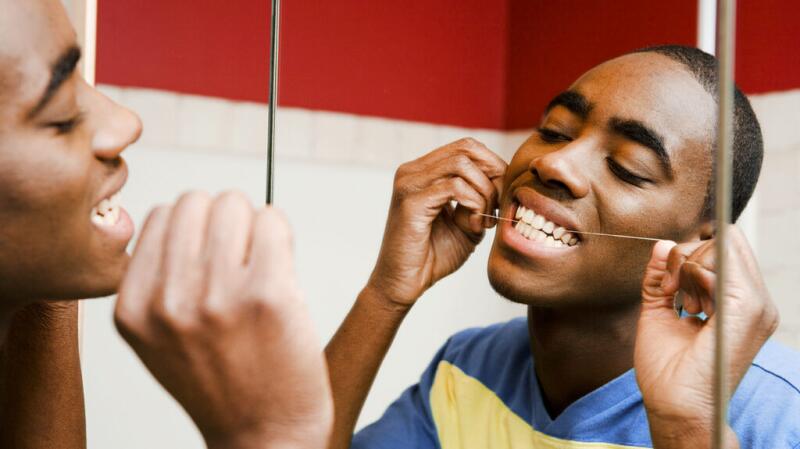This article provides an overview of what a calculus bridge is, its complications, and how to remove and prevent it.

A dental calculus, also called tartar, is a yellowish or whitish deposit of minerals on the surface of teeth. Calculus is commonly seen in areas where the salivary duct opens into the oral cavity.
When a calculus bridge occurs, the tartar forms across multiple teeth. Calculus bridges form when plaque becomes calcifies, or hardens over time.
Calculus bridges are composed of both organic and inorganic compounds. When tartar buildup spreads below the gum line, it makes the teeth harder to clean.
A calculus bridge is a common form of periodontal disease. Periodontal disease generally increases with age, with close to

A calculus bridge appears as a whitish yellowish deposit that forms along the gum line and across multiple teeth. This tartar buildup irritates gums. Gums may look red or swollen and may bleed sometimes.
Multiple factors can cause calculus bridge disease. The most common causes include:
- smoking
- an unhealthy diet
- too much coffee or tea consumption
- excessive consumption of chocolate or sweets
- poor dental hygiene
- a lack of professional dental care
Complications can occur if a calculus bridge is not treated. These are the most common complications.
Halitosis
Halitosis, commonly referred to as bad breath, can occur with the buildup of tartar in the mouth. Bacteria from hardened plaque causes an unpleasant odor to the breath. Brushing your teeth daily and getting professional dental cleanings can help prevent halitosis.
Left untreated, halitosis can be chronic and persist despite frequent brushing or using mints or gum.
Cavities
A dental cavity is a hole in a tooth that results when plaque and tartar destroy the tooth enamel, which is the hard outer layer of the tooth. Calculus bridges can extend into the gum line, exposing the tooth roots to tartar and plaque.
Left untreated, cavities can extend down into the nerve of the tooth. Treatment requires a root canal to fix the issue. In severe cases, the tooth cannot be saved and will need to be pulled.
Receding gums
Dental calculus can often build up along the gum line, causing gum disease. With gum disease, gums can recede, exposing the root of the tooth. This makes the tooth more vulnerable to additional tartar and plaque.
If left untreated, receding gums can cause bone loss. This can cause teeth to loosen, fall out, or have to be removed by a dentist. Sometimes, it is possible to graft gum tissue from another area of the mouth to cover the exposed tooth root.
Gingivitis
Gingivitis is the
Left untreated, gingivitis can cause bone loss and the teeth to loosen and fall out. The best way to prevent gingivitis is to brush with a soft brush and floss your teeth daily.
Tooth loss
In severe cases, calculus bridges can lead to tooth loss. This occurs when tartar buildup causes severe dental cavities, receding gums, or bone loss.
If you notice your gums bleed, starting to recede, or there is a yellowish or whitish film on your teeth, that is often the first sign of calculus bridge disease. Seek care from a dentist when this occurs to avoid complications such as bone and tooth loss.
The calculus bridge is calcified dental plaque. Dental hygienists can remove a calculus bridge with professional dental instruments and cleaning techniques.
During a professional dental cleaning, the dentist or dental hygienist will:
- Use a special tool or sonic cleaner to scrape off the hard tartar or the calculus bridge. This is called “teeth scaling.”
- Polish your teeth using a polishing paste and a dental polisher.
- Floss your teeth to get in between teeth and below the gum.
- Check your teeth for cavities and your gums for gum disease.
- Use a probe to check for and measure any pockets forming around the teeth.
The best way to prevent a calculus bridge is to practice good oral hygiene to remove plaque before it calcifies. Also, visit your dentist at least twice a year for a professional dental cleaning.
Good dental hygiene involves:
- brushing your teeth twice a day with a soft brush using a circular motion
- flossing your teeth daily
- using a fluoride rinse to strengthen the teeth when your dentist recommends it
Drinking plenty of water throughout the day will help flush out any bacteria that have adhered to your teeth. Avoid eating processed food, chocolate, or candy.
Some evidence shows that the vitamin C in orange peels helps fight off bacteria on teeth. Rub orange peels on your teeth for 2–3 minutes daily to remove tartar.
If you start noticing a buildup of tartar on your teeth or your gums are red or receding, seek dental care right away. The earlier you get treatment, the less likely you are to develop further dental complications.
A calculus bridge is caused by a buildup of tartar across the teeth. Smoking, poor dental care, and an unhealthy diet can cause a calculus bridge to form. When left untreated, calculus bridge disease can lead to complications such as bad breath, receding gums, gingivitis, and even tooth loss.
Your dentist can remove a calculus bridge through tooth scaling and polishing. The best way to prevent a calculus bridge from forming is to practice good oral hygiene, visit your dentist twice a year, and eat a healthy diet.







